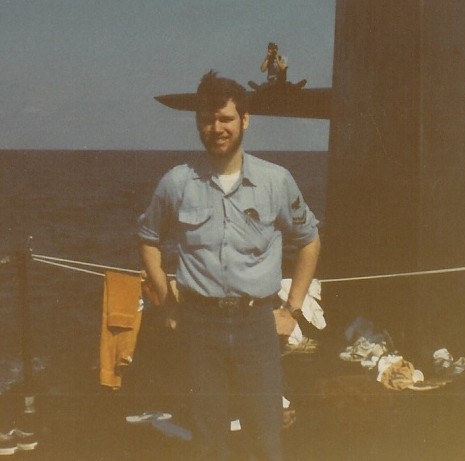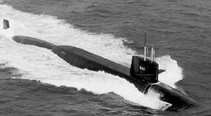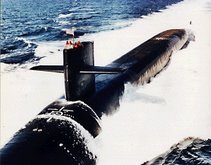Consider the following questions:
Do submarines provide a valuable asset to the “Transformation” of the American military into a network-centric fighting force or are they just inflexible relics of the Cold War and 20th century?
What is today’s force level requirement for Submarines? Do we need the Cold War level of roughly 100 SSNs or should we let the submarine force draw down to about 30 boats?
Capt. James H. Patton Jr. USN (Ret.), president of Submarine Tactics and Technology, Inc. and former member of the Naval War College faculty addresses the above questions in a recent Newport Naval War College linked white paper “THE SUBMARINE AS A CASE STUDY IN TRANSFORMATION – Implications for Future Investment.” I recommend reading the entire paper, about five pages, but I've also provided a summary and some thoughts below.
TRANSFORMATION
Mr. Patton’s paper outlines the evolution of the submarine from 1900 to present providing examples of submarine designs adapting to unforeseen requirements. Part of that evolution:
S-Boats designed in the 1920s for coastal defense and fleet boats designed in the 1930s as battle-fleet scouts found themselves in 1942 as distantly deployed commerce raiders.
The Skipjack class, designed to provide terminal guidance for nuclear-tipped Regulus cruise missiles fired from a large fleet of Halibut-class SSGNs, never materialized because of the advent of the Polaris ballistic missile.
The Thresher/Permit-class SSNs, designed to operate in pairs while firing rocket-propelled nuclear depth charges at distant Soviet subs, never carried out that mission, due to the failure of Sesco, a secure acoustic communications system needed for information exchange and the triangulation of sonar bearings for target localization.
Escorting carrier battle groups was the justification for the high speed of the Los Angeles class in the late 1960s. Even though submarines were used in direct support of battle groups in a 1977 Pacific Fleet exercise (RimPac), and a Navy warfare publication was published in 1980 based on further experimentation in RimPacs 1978 and 1979, this mission was not routinely assigned until after the Cold War ended, when many of the class were being decommissioned.
With the above examples and others, Mr. Patton presents an argument in that “To avoid obsolescence, it was sometimes necessary for extreme variant requirements to be made technically (and tactically) during a ship’s (and crew’s) lifetime. As a result it can be safely said that no U.S. submarine has ever been employed for its designed purpose, and no commanding officer ever performed that for which he was trained.” The only exception I would make is that of SSBN Fleet Ballistic Missile submarines who's purpose of nuclear deterrence has not changed since the 1960s only the targeting packages.
But then again, excess 726 Class SSBN capacity post the Cold War has resulted in four Tridents scheduled for conversion to the new Ohio Class SSGN. This will result in adapting a submarine platform from its initial design of nuclear deterrence to one of an Information Systems Research (ISR) intelligence processing node and Special Operation Forces (SOF) platform with land strike capability. A truly network-centric warfare system as Mr. Patton qualifies with using the Giant Shadow and Silent Hammer counterterrorism exercises as examples.

USS Virginia (Source: US Navy)
Another point made in the white paper is this:
“It should also be clear, to those who think deeply about such matters, that the SSGN program is far more than just a way to extend the operational viability of declining SSBNs; it is a pilot program to investigate just what the Virginia class should become when it has fully evolved in ten years.”
Essentially the Ohio SSGN program is a proving ground for technologies and tactics that well evolve and be incorporated into the new Virginia class submarines.
FORCE LEVEL
The latter part of the Mr Patton's paper briefly addresses the number of submarines we will require for our furture submarine force "Force-Level" with this.
However, with the world situation becoming increasingly unstable, there are more than one or two places where a credible, actual, or virtual U.S. presence must be claimed or maintained. Therefore, to sustain persistently unseen assets around the world, there is a force-level number that must be maintained. This number is significantly more than thirty, the level resulting from a one-per-year build rate of thirty three-year-design-life hulls, when operating tempos, maintenance, and transits are factored in. All post–Cold War submarine force level studies by several agencies indicate an enduring need for numbers of SSNs far in excess of what can be sustained by a one-per-year build rate.
I think what unstable areas Mr. Patton alludes to is obviously the Middle East and Western Pacific. But without long forward deployments a SSN force of 30 hulls, with some in the shipyard some deployed for carrier taskforce ASW protection and some in port, the Navy would be hard pressed to “sustain persistently unseen assets around the world”.
It is stated in the paper that "SSN taskings by fleet and national commanders have essentially doubled since the end of the Cold War" even though the force level of SSNs has dropped from 100 to roughly 50 today. The predicted affect is: “Because of this submarine shortage, existing ships must now transit at much higher sustained speeds than originally planned, which threatens the life span of their reactors.” If this is true then SSNs would be heading to the shipyard sooner for refueling thereby putting addition pressure on our existing submarine assets.
Conclusion
To me all the above (Submarine systems adaptability and increased force requirements and tasking) seems to run counter to the current DOD and Navy decisions with regards to the New London Sub Base being on the Brac list and the reduced build rate for the Virginia class Subs. My concern is that the powers that be (budgetary and political) may indeed hurt Submarine Force and lessen this country’s ability to defend itself.









3 comments:
Thanks! I'll have to set aside time to give this a read. ~Will
Lubber:
Seems to me the whole military continues to struggle finding a mission in the post-Soviet era. I was an ASW type 30 years ago, and our training was all about keeping tabs on the Soviet boats. I begged my way aboard an FFG in the Bahamas a couple of years ago, and the crewmembers I spoke to said they didn't even bother doing ASW patrols any more -- they just assisted the Coasties in drug interdiction (by providing radar and elint support).
There are still bad guys out there -- I'm convinced that at some point we'll get into some pushing and shoving with the Chinese. We don't want to invade China, and they don't want to take over the US, but each of us wants to have access to the same resources and markets. They'll start nibbling at some point - Taiwan first - and see what we do.
Much as I hate to say it -- I think the question is how much of a surface fleet do we need? Carriers are impressive to look at, but you have to support them with a whole array of screening vessels. Can't we accomplish much of their mission using SSNs with cruise missles and USAF assets?
How do we put Marines ashore if we don't have a surface fleet? The answer I think is that we don't have to land troops from the sea. The last time we mounted an amphibious landing, the news journalists were on the beach waiting for them. How nuts is it that we have SEAL units in the mountains of Afganastan? Why do we have Green Berets, and SEALs (2500 of them??), and USMC Force Recon, etc? Everyone has to 'get some' these days, and it makes for goofy tasking.
A couple of years ago, I heard a speech by a 4-star admiral named Owens. His position was that if we were designing the military today, there wouldn't be four branches. The military would be a unified command, eliminating the overlap and competition we have today. It was interesting that one example he gave was the existance of Walter Reed and Bethesda hospitals within miles of each other. I thought it was pretty gutsy that the BRAC recommendations included the elimination of Walter Reed.
I'd keep a strong sub force. As has been the case for 40 years, we need a deterrent force that can't be neutralized.
Paul, thanks for the comments on the post. I’m in agreement with your assessment about the post cold war military drift. The military is not any less capable or lethal; they are doing more with less these days and kicking butt in the process. Nevertheless, there is something to be said for having a well-defined foe. Things seemed much more linear against the Soviets. You pretty much knew what your enemy’s capabilities were and could counter that capability in a like manner. Even when the adversary was not directly the Soviet Union it was in all likelihood a surrogate or someone using Soviet hardware.
Today our enemies have learned the lessons of the cold war, that is do not compete directly with the US military in a conventional battle space. You will lose if not by superior tactics and weapons then through economic attrition. Because our main opponent uses unconventional warfare, terrorist tactics, big-ticket weapons systems seem less important or not necessary. However, as we continue to draw down our expensive systems in favor of special ops boots and hardware a future adversary may see a new weakness to exploit.
I don’t see China confronting us directly on anything but maybe Taiwan, and only if the Taiwanese push the Chinese into it by demanding independence. China’s behavior is more competitive than adversarial of late, but it is still a totalitarian state and therefore runs the risk of becoming something we fought two world wars and a cold war in twentieth century to prevent.
There is still a place in this new world for these mature cold war weapons systems, but only if these systems are adaptable and it core ability is its unpredictability though stealth. Submarines are that weapons system.
Post a Comment